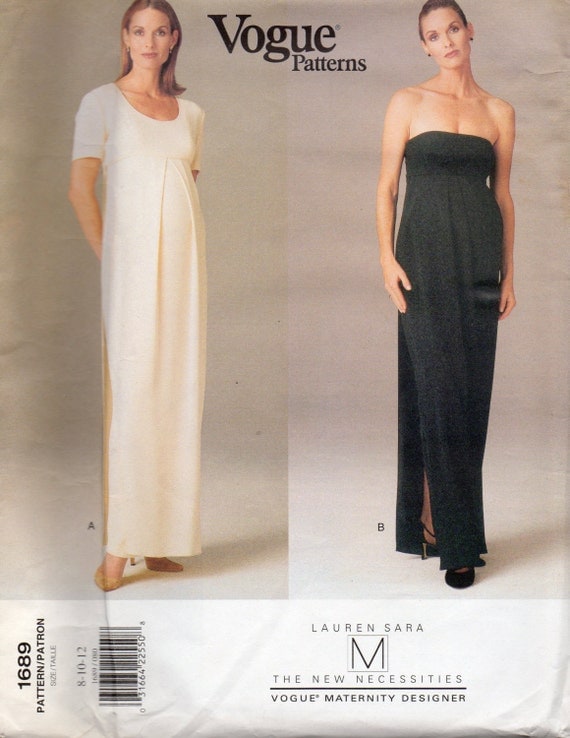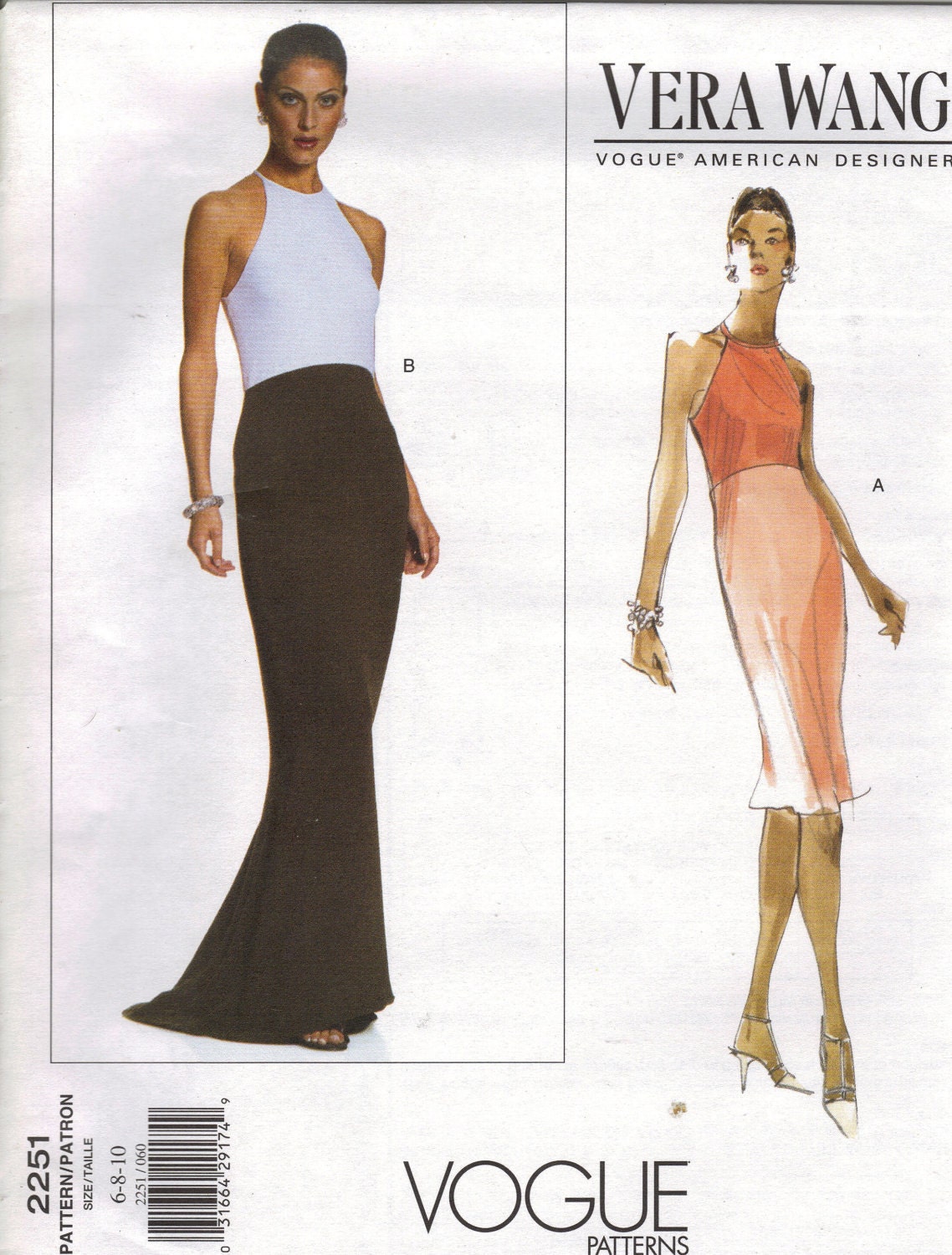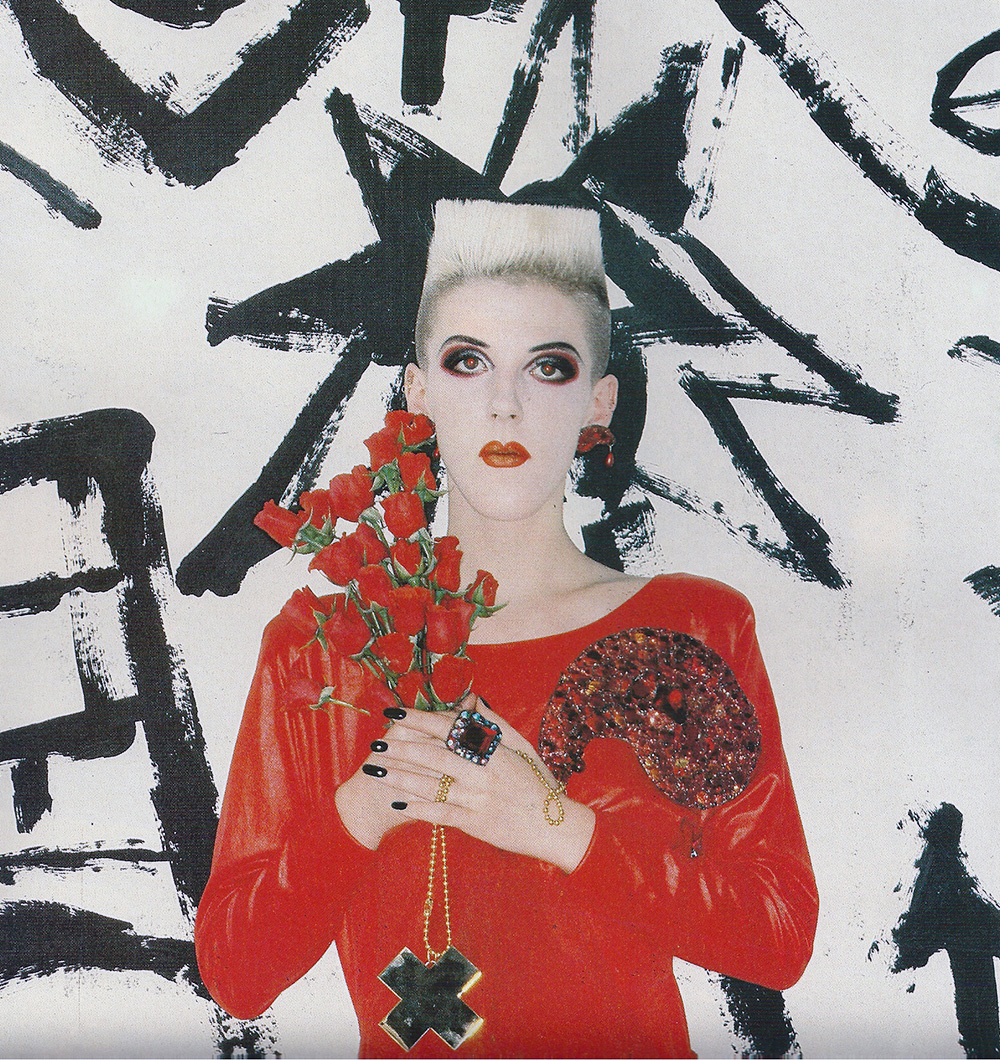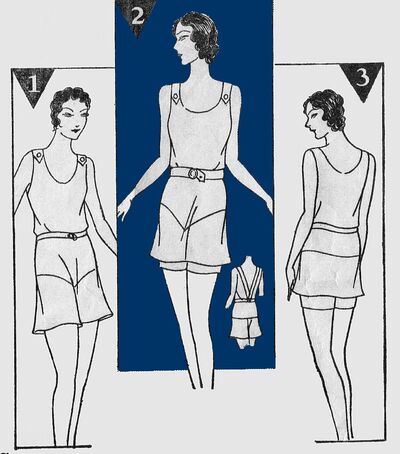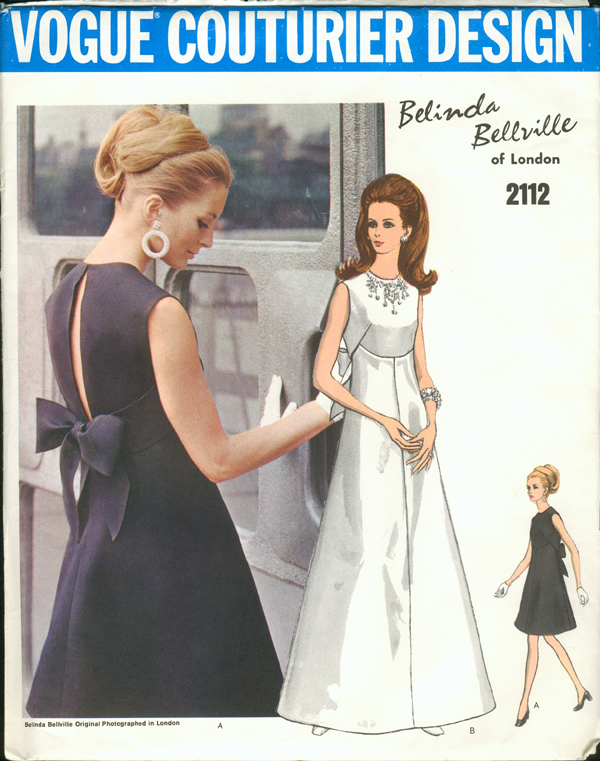![1930s Blanche Rothschild illustration of a bridal gown, McCall 9284 circa June 1937 1930s Blanche Rothschild illustration of a bridal gown, McCall 9284 circa June 1937]()
McCall 9284 illustration by Blanche Rothschild, ca. June 1937. Image via PatternVault on Etsy.
Vintage bridal patterns offer a unique alternative to modern bridal designs. Even if you’re already married, they provide a glimpse into past bridal fashions’ sometimes exotic vintage details—making them tempting even for those not in need of a wedding dress. (Can we expect Debi Fry to make her 1940 bridal pattern, McCall 4004?)
Now that wedding season is in full swing, here’s a selection of vintage bridal patterns, from the Twenties to the Eighties.
1920s
In the Twenties and Thirties, bridal patterns usually did double duty as patterns for formal dresses. This 1920s Peerless Patterns sign features a wedding illustration promoting a number of patterns:
![1920s Peerless Patterns advertising poster 1920s Peerless Patterns advertising poster with bridal scene]()
1920s Peerless Patterns advertising poster. Image via PatternVault on Etsy.
This fantastic bridal or evening dress is short, in keeping with the current fashion, and may have one or two extended side panels that give the effect of a train:
![McCall 4985 (1927) 1920s evening or bridal dress pattern - McCall 4985 CoPA-KLS]()
McCall 4985 (1927) Image via the Commercial Pattern Archive, Kevin L. Seligman collection. For research purposes only.
1930s
Thirties bridal patterns have the same glamour we associate with the decade’s evening wear. This pattern for a bridal gown or dinner dress dates to circa June 1934:
![McCall 7852 (1934) 1930s bridal gown or dinner dress pattern - McCall 7852]()
McCall 7852 (1934) Image via Etsy.
A reproduction version of this pattern for a bridal gown or afternoon dress is available from the Vintage Pattern Lending Library:
![McCall 8331 (1935) 1930s bridal gown or afternoon dress pattern - McCall 8331]()
McCall 8331 (1935) Bridal gown or afternoon dress.
A copy of McCall 8331 recently seen on eBay was accompanied by this wedding portrait, which shows the dress made up:
![San Francisco estate wedding portrait showing McCall 8331 San Francisco estate wedding portrait showing McCall 8331]()
1930s wedding portrait from a San Francisco estate. Image via eBay.
1940s
In the Forties the bride begins to take centre stage on pattern envelopes, although evening and bridesmaid versions are still included. This bridal or evening dress was reissued in the Vintage Vogue line as Vogue 2384:
![Vogue S-4532 (1944) 1940s Vogue Special Design wartime bridal pattern S-4532]()
Vogue S-4532 (1944) Image via the Vintage Patterns Wiki.
This strong-shouldered, postwar design has a sweetheart neckline and waist piping detail. The pattern also includes a bridesmaid’s dress with short, shirred sleeves (click image for the technical drawings):
![McCall 6353 (1946) 1940s bridal pattern - McCall 6353]()
McCall 6353 (1946) Image via Etsy.
1950s
By the 1950s the bride, in her full-skirted glory, dominates the pattern envelope. This Jacques Fath design for a bride’s or bridesmaid’s dress has a bustled back and tiny shawl collar. The bridesmaid’s version simply lacks a train:
![Vogue 1331 by Jacques Fath (1956) 1950s Jacques Fath bridal pattern - Vogue 1331]()
Vogue 1331 by Jacques Fath (1956) Image via carbonated on flickr.
John Cavanagh was known for his connection to the English court. He licensed several bridal patterns with Vogue, and designed the Duchess of Kent’s wedding dress in 1961. (See my earlier post here.) This short-sleeved Cavanagh design has a simulated train; the smaller figures show bridesmaid’s and evening versions:
![Vogue 148 by John Cavanagh (1958) 1950s John Cavanagh bridal pattern - Vogue 148]()
Vogue 148 by John Cavanagh (1958) Image via VADS.
1960s
Also by John Cavanagh, this 1960s bridal design with a cathedral-length Watteau train was modelled by Jean Shrimpton:
![Vogue 1347 by John Cavanagh (1964) 1960s John Cavanagh wedding dress pattern - Vogue 1347]()
Vogue 1347 by John Cavanagh (1964) Image via the Vintage Patterns Wiki.
No bridal pattern survey could be complete without this Halston pattern for bridal headpieces:
![Vogue 7082 by Halston of Bergdorf Goodman Vogue 7082 Halston of Bergdorf Goodman 1960s bridal headpieces pattern]()
Vogue 7082 by Halston of Bergdorf Goodman (c. 1965) Image via eBay.
1970s
From the early 1970s, this Pierre Cardin bridal gown, shown in a silk knit, has an optional overskirt with handkerchief train:
![1970s Pierre Cardin bridal gown pattern - Vogue 2520]()
Vogue 2520 by Pierre Cardin (1971) Image via eBay.
![Vogue 2520 back Vogue 2520 back]()
Illustration and technical drawing for Vogue 2520. Image via eBay.
Although it isn’t for everyone, Yves Saint Laurent’s couture bridal design for a gathered, bias dress, filmy coat, and five-yard veil distinguishes itself by showing the bride as wayward Vestal virgin (see Paco Peralta’s post here):
![Vogue 1590 by Yves Saint Laurent (c. 1976) 1970s Yves Saint Laurent bridal pattern - Vogue 1590]()
Vogue 1590 by Yves Saint Laurent (c. 1976) Image via Patrones Costura on Etsy.
1980s
Released in 1980, this opulent Dior design for a bell-skirted bridal gown, complete with bias necktie, cummerbund, and bow-embellished headpiece, is drawn from the Christian Dior Haute Couture collection for Fall 1979 (read Dustin’s post here):
![Vogue 2545 by Christian Dior (1980) 1979 Christian Dior couture bridal gown pattern - Vogue 2545]()
Vogue 2545 by Christian Dior (1980) Image via PatternVault on Etsy.
Perfect for steampunk weddings, Vogue 2180 by Bellville Sassoon has an elaborate bustle that gives it a neo-Victorian flair:
![Vogue 2180 by Bellville Sassoon 1980s Bellville Sassoon bridal or evening pattern - Vogue 2180]()
Vogue 2180 by Bellville Sassoon (1989) Image via eBay.
For more on the history of bridal fashion, see the V&A Weddings page and Edwina Ehrman’s The Wedding Dress: 300 Years of Bridal Fashions (V&A, 2011).
Tagged:
Bellville Sassoon,
bridal,
Christian Dior,
Halston,
Jacques Fath,
John Cavanagh,
McCall's,
Pierre Cardin,
sewing,
vintage,
Vintage Vogue,
Vogue Patterns,
wedding,
Yves Saint Laurent ![]()
![]()
![]()
![]()
![]()
![]()
![]()
![]()








































